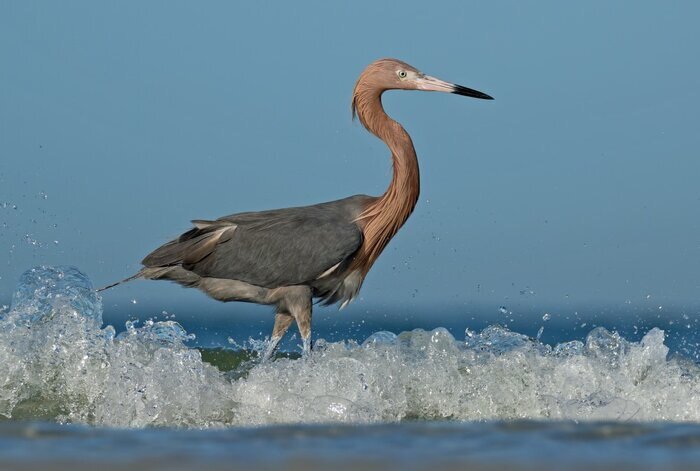Southern mangrove forests hosting 150 migratory bird species

TEHRAN – Some 150 species of migratory birds are wintering in the wetlands and mangrove forests of Southern Qeshm Island, the provincial department of environment chief Mohammad Hashem Dakhteh, has said.
The mangrove forests or Hara forests, covering an area of 27,310 hectares, are located on the southern coast of Iran, particularly on and near the island of Qeshm in the Persian Gulf.
Dominated by the species Avicennia marina, known locally as the "hara" or "harra" tree, the forests represent an important ecological resource. The "Hara Protected Area" on Qeshm and the nearby mainland is a biosphere reserve where commercial use is restricted to fishing (mainly shrimp), tourist boat trips, and limited mangrove cutting for animal feed.
The area is a major habitat for migratory birds in the cold season, and for reptiles, fish, turtles, and venomous aquatic snakes.The area is a major habitat for migratory birds in the cold season, and for reptiles, fish, and varieties of Arthropoda and bivalves. Green (or hooked) turtles and venomous aquatic snakes are also indigenous to the forests.
Beautiful birds such as Dalmatian pelicans, cormorants, European bee-eater, larks, and flamingos came to the Hara Biosphere Reserve and its wetlands, he stated.
Hara Mangrove Biosphere Reserve and its wetlands are one of the best habitats for migratory birds in the country. Every year, in autumn and winter, large flocks of birds from different parts of the world, especially from the northern hemisphere, migrate to this area, he also explained.
The drying up of some lakes inside the country, the pollution, and the crowds in some wetlands of Iran and the world have turned Qeshm into one of the best habitats for the species' wintering trip, Dakhteh said.
Diverse aquatic life and seasonal ponds, habitats, peace, being far from human reach and the appropriate temperature in the winter season are other factors that attract rare migratory birds to this area every year.
So far, more than 250 migratory and native bird species have been identified in different habitats of Qeshm Island in four seasons, he noted.
Some species, such as the spotted owl, crab plover, and Dalmatian pelican, are also of interest in Iran and West Asia [Middle East] due to their limited number.
The best time for bird watching in the Qeshm international geopark is autumn and winter, when ornithologists and domestic and foreign tourists can watch a variety of prominent birds, including the desert white-throat, purple sunbird, pied avocet, Shrikes, the cormorant, and herons.
Unique birdwatching sites in Iran
Iran is decorated with impressive wetlands that hold a great share of aquatic and bird species and wildlife. Anzali wetland, Qeshm Island, Urmia Lake, and Miankaleh Peninsula are among the most important locations for bird watching in Iran.
Miankaleh International Wetland in Mazandaran, called the birdwatching paradise of Iran, stretches to a total area of 68,000 hectares, which is home to at least 130 species of migratory species with a population of 1.5 million.
Being an impressive bird-watching destination, the wetland displays a variety of bird species such as otters, all kinds of fish-eating ducks (common goldeneye and Mergus), pelicans, flamingos, cormorants, common pheasants, partridges, mute swan, tundra swan, and coots. Ashuradeh was introduced and registered as one of the world's first biosphere zones in 1975.
Gomishan wetland in Golestan province is home to over 20,000 water birds, and more than 20 species of birds, which supports three IUCN Red List vulnerable species of waterbirds, i.e., Pelecanus Crispus, Aythya nyroca, and Vanellus gregarious, as well as the vulnerable mammal Phoca (Pusa) caspica; it is also an important staging area for the fish subspecies Rutilus rutilus caspicas.
Located at the foot of the Zagros mountains in north-western Iran, Zarivar is a freshwater wetland hosting over 74 bird species, which is designated as a Ramsar Site.
The site provides a suitable breeding and resting place for birds and other wetland animals, and due to the relatively extensive reed beds, it is an important overwintering site for northern migratory birds.
FB/MG
